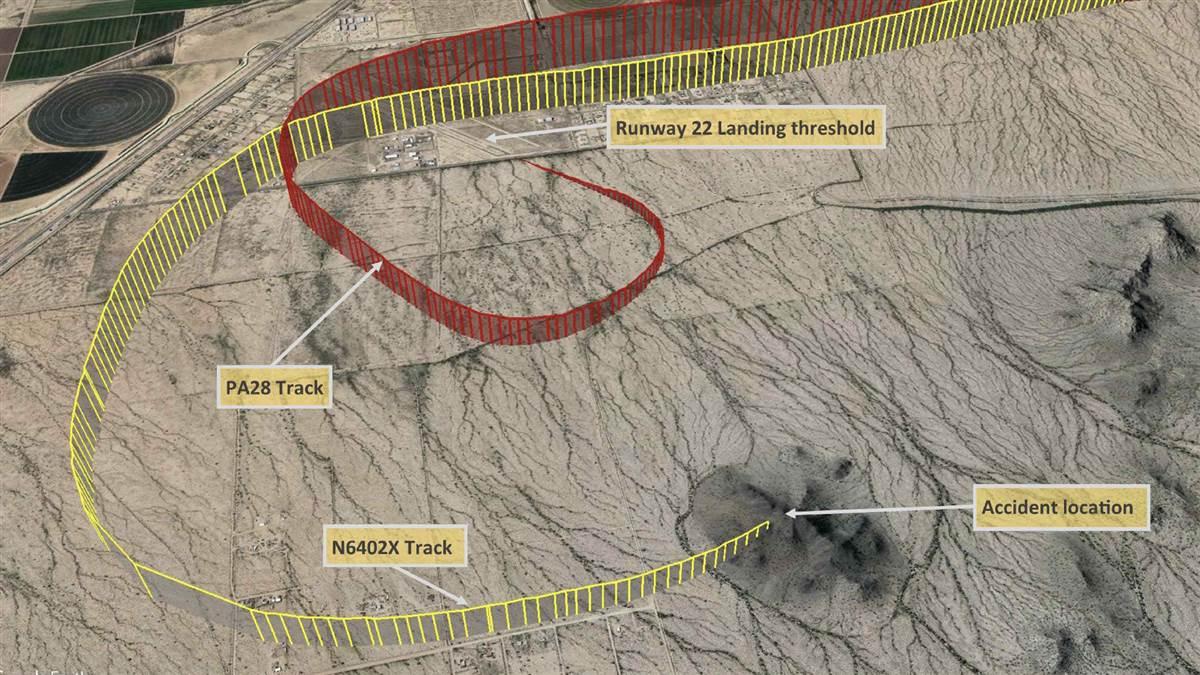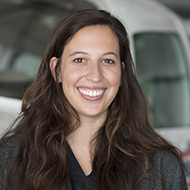10 feet too low
Abnormal pattern leads to CFIT at night

The pilot of 02X often flies at night—he enjoys the view of the night sky and taking aerial photos. And at the beginning of summer in Arizona’s Valley of the Sun, there’s plenty of incentive to fly at night rather than in the heat of the day when temperatures can easily soar above 100 degrees Fahrenheit.
The non-instrument-rated private pilot has approximately 800 flight hours, and his last four flights have been the same route that he is flying this evening. He often flies to A39 for fuel, then flies home. It’s a clear VFR night and after departing at about 8 p.m., the pilot flies south-southeast toward the Phoenix Sky Harbor Class B airspace, and he’s cleared through the airspace at 4,500 feet. Another aircraft, a Piper PA–28, is inbound to A39 just ahead of the Zenair with the same idea—to get some cheap fuel. The PA–28 pilot can hear the Zenair pilot talking to ATC and can see his position on his cockpit ADS-B receiver. As both airplanes approach the nontowered field, they make radio calls to determine one another’s position as they both prepare to enter a downwind for Runway 22.
The PA–28 is still ahead of the Zenair, but even so, the Zenair descends and proceeds to fly over the Ak-Chin Regional Airport at 8:21 p.m., now at only 2,000 feet msl—700 feet agl—which is lower than the traffic pattern altitude (TPA) for the field. The PA–28 pilot, who is on a left downwind, notices how low the other aircraft is and is worried about spacing. He keeps a tight pattern, turning inbound for Runway 22 earlier than he otherwise would have. As the PA–28 pilot reports that he’s on final, the Zenair pilot calls that he is on base. What the Piper pilot doesn’t know, though, is that the Zenair is flying much wider and much lower than him and is in fact a couple of miles away even as the PA–28 pilot prepares to land.
After landing, the PA–28 taxis to the fuel island and waits to watch the Zenair land. It is now “very dark, with just a faint hint of blue on the horizon.” To the east of the field, the terrain in this unpopulated area is indiscernible. The skies are too quiet and after several minutes of seemingly no traffic in the pattern, the pilot calls flight service to report the overdue aircraft.
The Zenair pilot flew with a SPOT tracker. Rescue services seek out its last known position and discover the aircraft about 2 miles from the runway threshold, where it had encountered an isolated 1,735-foot hill. The wreckage is located approximately 10 feet below the peak; the pilot did not survive. The NTSB lists the probable cause as the pilot’s “loss of situational awareness and descent below pattern altitude during the landing approach, which resulted in collision with terrain at night.”


Retrospective
This was a familiar flight to the accident pilot, and it is possible that his comfort with the route led to complacency. He had flown in the area for years, and specifically had flown this exact route on his most recent flights. This was his backyard, and he probably thought he knew it like the back of his hand, which could have minimized his perception of risk.
Night flights are by nature higher risk, and arguably one of the biggest influences on this flight was that it was at night. Humans are daytime creatures, and in the darkness, we are simply not as adapted to the environment. Especially affected is, of course, our vision. Even on clear nights, it can be impossible to distinguish terrain features. This is especially a factor in less populated areas like near Ak-Chin Regional Airport, where there is limited ambient city lighting, or over water.
Deer Valley Airport, the pilot’s home base, is a busy Class D airport underlying the Phoenix Class B airspace. Ak-Chin Regional is a nontowered field in an unpopulated area. Even though the pilot flew to Ak-Chin often, the majority of his experience was in controlled airspace, where ATC provides spacing. Having the PA–28 in the pattern with him, especially so close that they were essentially entering downwind at the same time, may have been something he was not used to, and his resulting modifications to give the PA–28 time to clear the runway were not standard.
Standard operating procedures when preparing to land are critical for several reasons, one of which is to allow smooth and expected flow into an airport. In this case, to provide separation, the Zenair pilot decided to expand his pattern and flew a round, looping route that was well outside the standard square racetrack and below the TPA. While it was a good idea to modify his pattern to allow more spacing, the way that he did it was not appropriate. Another way he could have modified his pattern would have been to remain above TPA and fly the traffic pattern at a higher altitude as he descended while the PA–28 landed. He also could have done a few three-sixties to provide more spacing. He could have even briefly departed the area, orbited away from the field, and then re-entered the pattern on a 45-degree entry. All these options would have allowed a standard pattern and sufficient separation.
Another key reason to follow a standard traffic pattern is to ensure terrain clearance. The FAA only guarantees terrain clearance within a certain space of the runway threshold at paved airports like A39. The standard traffic pattern is within the “safe” area. Operating outside that safety bubble as the pilot did introduces risk, and in this case, it led to tragedy. Be careful of deviating from standard, especially in environments like night flying. These higher risk environments—even ones that seem familiar, as the often-flown route likely did to the accident pilot—require higher vigilance every time.
The Zenair pilot was not taught to fly the type of pattern he flew the night of the accident, but he also likely did not realize how far from standard he was operating. It is easy to let our skills slide as time goes on, and it can be hard to recognize a normalization of deviance in ourselves. One way to combat this is to fly with a CFI (or at least another experienced pilot you trust to give you honest feedback) more often as an audit of skills and to catch any bad or potentially dangerous habits that might be developing.
It is possible that an instrument rating also would have helped. A common practice at night is for instrument rated pilots to use an instrument approach as guidance, even in VFR conditions. This helps ensure minimum safe altitudes and a stable approach. You may recall a similar, high-profile accident that changed the way we approach crew resource management: the Korean Air Boeing 747 into Guam that did not follow instrument approach guidance while VFR at night and crashed into the side of a hill.
Night flying, when properly prepared for, can be a rewarding experience, something the Zenair pilot knew well. But for a variety of converging factors, this pilot set out on a June night to enjoy the stars and refuel his airplane, and because of a seemingly small change—a wider and lower pattern—it ended in tragedy. Following standards are key to safe flight. Deviations from them may bring unintended results.



